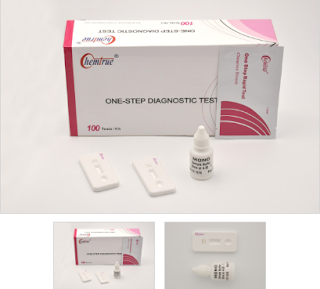Menopause Examination
1. The follicular generating hormone (FSH) rises.
2. Levels of estradiol (E2) and progesterone decreased.
3. There is no change in luteinization or hormone (LH) during menopause, and it can be increased after menopause.
4. Segmented scraping and endometrial pathological examination: endometrial tumors were excluded.
5. Pelvic ultrasound, CT and magnetic resonance examination can reveal the whole uterus and ovaries to eliminate gynecological organic diseases. Type B ultrasonography can exclude uterine and ovarian tumors, and understand the thickness of the endometrium.
6. Measure bone density, etc. to see if there is osteoporosis.
The diagnosis
1. Medical history
Based on clinical presentation and postmenopause.
2. Physical examination
General and gynecological examinations included. Those who have not undergone gynecological examination after 3 months of reexamination must undergo reexamination.
3. Laboratory inspection
Determination of hormone levels.
Complications
1. Disorder of autonomic nervous system with neuropsychological symptoms
Psychotic neurosymptom: the clinical feature is the first occurrence of peri-menopausal phase, and there are many patients with sexual decay, and there are two types: excitability, depression.
2. Urogenital tract symptoms
Vulva and vaginal atrophy may occur; Symptoms of bladder and urethra; Uterine prolapse and vaginal wall bulge.
3. Cardiovascular symptoms
(1) some patients have pseudoangina, sometimes accompanied by palpitations and chest tightness.
(2) a small number of patients have mild hypertension, characterized by increased systolic blood pressure, low diastolic blood pressure, paroxysmal attacks, dizziness, headache, chest tightness and palpitations when blood pressure rises.
4. Osteoporosis
Starting from perimenopausal period, the rate of bone resorption is faster than that of bone formation, which leads to bone loss and osteoporosis
The otc menopause test of our company is of good quality. Learn more about menopause detection tests from chemtron biotech.
2. Levels of estradiol (E2) and progesterone decreased.
3. There is no change in luteinization or hormone (LH) during menopause, and it can be increased after menopause.
4. Segmented scraping and endometrial pathological examination: endometrial tumors were excluded.
5. Pelvic ultrasound, CT and magnetic resonance examination can reveal the whole uterus and ovaries to eliminate gynecological organic diseases. Type B ultrasonography can exclude uterine and ovarian tumors, and understand the thickness of the endometrium.
6. Measure bone density, etc. to see if there is osteoporosis.
The diagnosis
1. Medical history
Based on clinical presentation and postmenopause.
2. Physical examination
General and gynecological examinations included. Those who have not undergone gynecological examination after 3 months of reexamination must undergo reexamination.
3. Laboratory inspection
Determination of hormone levels.
Complications
1. Disorder of autonomic nervous system with neuropsychological symptoms
Psychotic neurosymptom: the clinical feature is the first occurrence of peri-menopausal phase, and there are many patients with sexual decay, and there are two types: excitability, depression.
2. Urogenital tract symptoms
Vulva and vaginal atrophy may occur; Symptoms of bladder and urethra; Uterine prolapse and vaginal wall bulge.
3. Cardiovascular symptoms
(1) some patients have pseudoangina, sometimes accompanied by palpitations and chest tightness.
(2) a small number of patients have mild hypertension, characterized by increased systolic blood pressure, low diastolic blood pressure, paroxysmal attacks, dizziness, headache, chest tightness and palpitations when blood pressure rises.
4. Osteoporosis
Starting from perimenopausal period, the rate of bone resorption is faster than that of bone formation, which leads to bone loss and osteoporosis
The otc menopause test of our company is of good quality. Learn more about menopause detection tests from chemtron biotech.


评论
发表评论